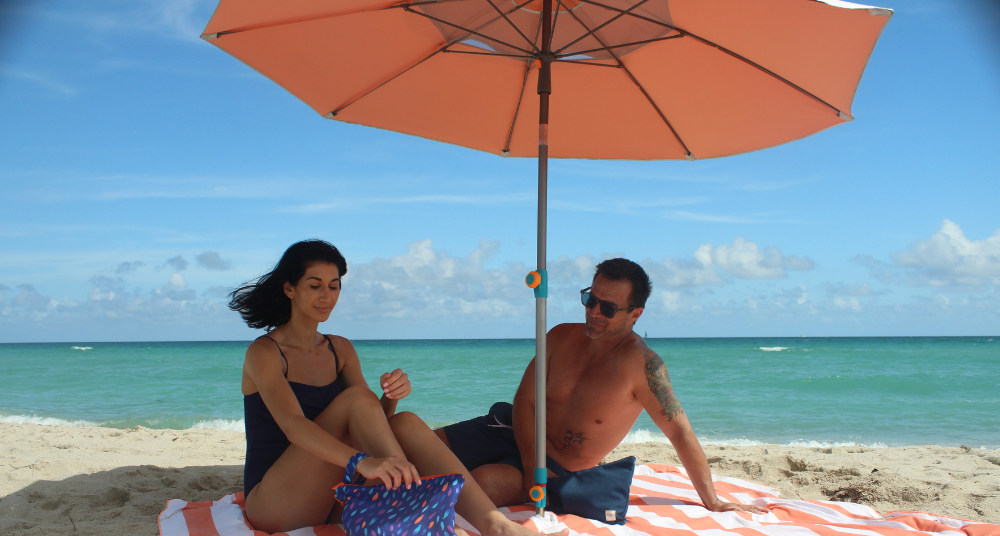Ever wondered what happens to the plastic bottles you toss in the recycling bin?
At Handy Beach Goods, those bottles don’t just disappear — they get a second life under the sun.
Our umbrellas and blankets are made with RPET (recycled polyester), a durable fabric spun from post-consumer plastic bottles. It’s soft, strong, and planet-kind — proof that sustainable design can also mean beautiful design.
As the founder of Handy Beach Goods, I wanted to share how recycled plastic transforms into premium beach gear that feels good, looks good, and does good.
Step 1 — Collecting & cleaning plastic bottles
Every RPET canopy begins with bottles collected from recycling centers and coastal cleanup programs.
These bottles are cleaned, shredded into small flakes, and processed to remove labels and residue.
Each Handy Beach Umbrella canopy gives about 80 plastic bottles a new purpose — keeping them out of landfills and oceans.
♻️ External reference: Textile Exchange – How RPET fibers are made
Step 2 — Turning flakes into yarn
Next, the flakes are melted into tiny pellets that are spun into high-performance yarn.
This yarn has the same strength and flexibility as virgin polyester — but with a 50% lower carbon footprint.
Our certified production partners use closed-loop systems, ensuring minimal waste and no new petroleum extraction.
Step 3 — Weaving durable, UV-resistant fabric
That yarn is woven into a thick, smooth canopy fabric — built for real coastal life.
To keep beachgoers protected, we add a reflective silver coating that enhances UV resistance and heat reflection.
This dual-layer design helps our umbrellas achieve a UPF 55+ rating, meaning they block over 99% of UV rays while staying cooler underneath.
👉 Also read: Beach umbrellas miss the mark on UV — here’s what to look for.
Step 4 — Crafting comfort that lasts
Sustainability isn’t just about materials — it’s about longevity.
Every Handy Beach Umbrella is sewn with reinforced stitching, wind-tested for coastal gusts, and made to last for years — not seasons.
By choosing RPET, you’re choosing fewer replacements, less waste, and more reliable shade.
🌊 External reference: National Geographic – How plastic bottles are recycled
Why RPET matters for the planet
Each umbrella keeps roughly 80 plastic bottles out of landfills.
RPET production uses 59% less energy than virgin polyester.
It reduces dependency on fossil fuels and supports a circular economy.
These small design choices — multiplied by thousands of products — create measurable impact.
That’s what we mean when we say planet-kind.
A note from Agnes
When we launched Handy Beach Goods, my goal wasn’t just to make beach days easier — it was to make them more mindful.
Designing with recycled materials felt like the right start.
Today, knowing that our umbrellas literally turn waste into comfort still makes me proud every time I see one standing tall on the sand.
Thank you for being part of this change — one bottle, one beach day at a time.
FAQ
Q: What is RPET fabric made from?
RPET stands for recycled polyethylene terephthalate — made by processing used plastic bottles into durable polyester fiber.
Q: Is RPET as strong as regular polyester?
Yes. RPET has comparable strength and flexibility but with a significantly smaller environmental footprint.
Q: How many bottles are used in a Handy Beach Umbrella?
Each canopy is made from approximately 80 recycled plastic bottles.
Ready to enjoy premium shade that’s kind to the planet?
Explore our Handy Beach Umbrella & Anchor System →, made from 80 recycled bottles and wind-tested for real coastal life.


